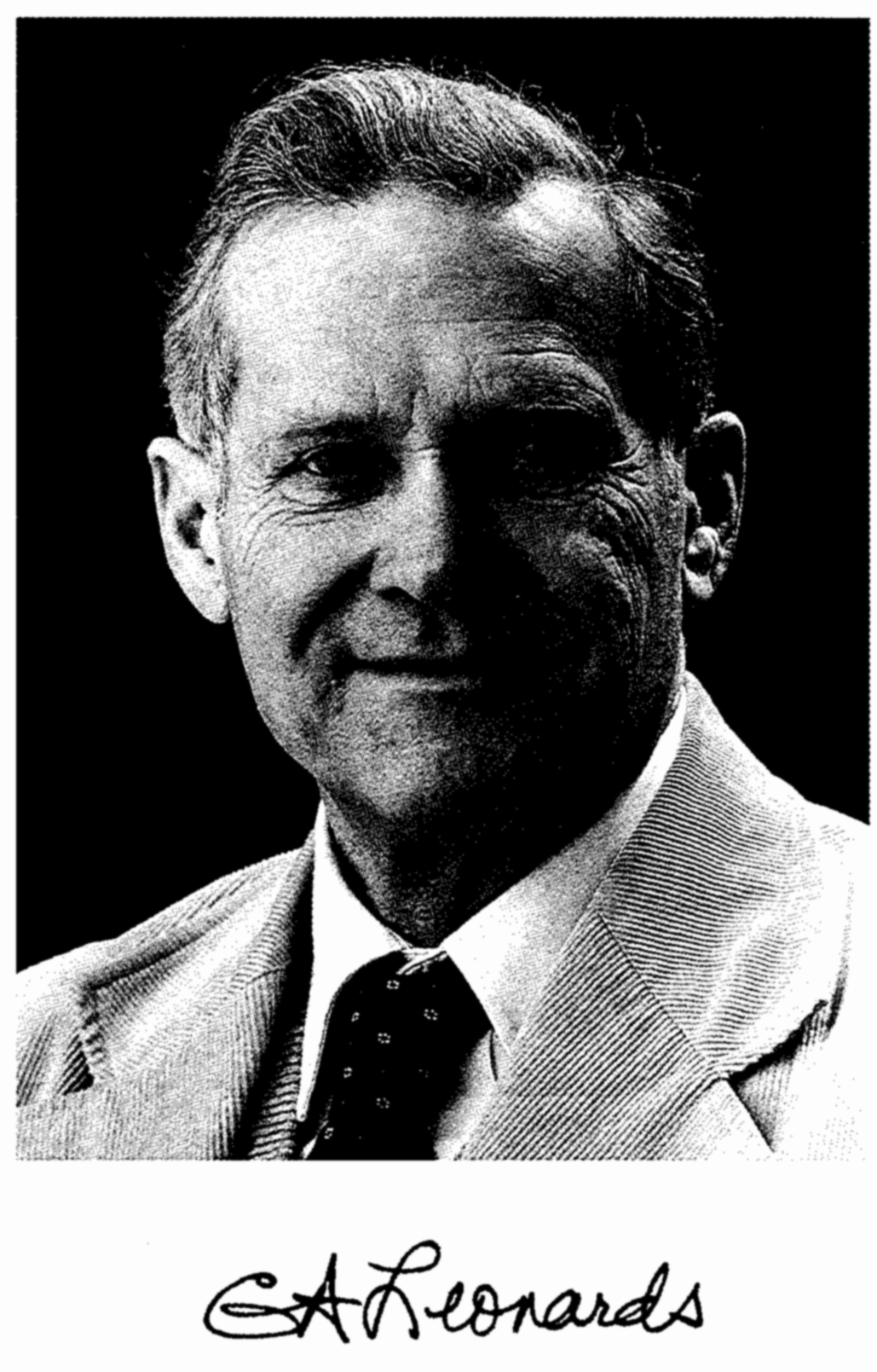Page 189
CLARENCE EDWARD LARSON
1901–1999
BY ALVIN M. WEINBERG
CLARENCE EDWARD LARSON died of pneumonia at the age of eight-nine on February 15, 1999. Larson was one of the original scientists whose life was largely devoted to nuclear energy.
I first encountered Clarence Larson in 1945, when I moved from the Chicago Manhattan Project to the X-10 plutonium plant in Oak Ridge, Tennessee. Clarence, a chemist, had been a member of Ernest Lawrence's team that designed, built, and supervised the operation of the Y-12 electromagnetic U-235 separation plant. The core of the Hiroshima bomb was almost entirely made of U-235 that had been separated at the Y-12 plant. Clarence Larson, as the senior chemist on the Y-12 team, contributed massively to the success of the laborious, atom-by-atom separation of the fissile core of the Hiroshima bomb.
My sister and brother-in-law, Fay and Irving Goleman, had been colleagues and friends of Clarence and his first wife, Jerry, at the College of the Pacific in Stockton, California. Clarence had been the chairman of the Chemistry Department at the College of the Pacific from 1939 to 1942, when he joined Lawrence's team. So when I arrived in Oak Ridge in May of 1945, I had already been told to look up the Larsons.
Clarence, while a graduate student in biochemistry at the University of California, Berkeley, had studied the clotting of blood. In the course of these studies, he devised a glass electrode for measuring the pH of flowing solutions. His glass electrode proved to be a most useful device.
Page 190
Larson's pH meter illustrates his sound grasp of chemistry, as well as his ability to improvise. This latter trait was demonstrated when Clarence was director of the technical staff for the Tennessee Eastman Corporation, which by this time (1943 to 1946) was operating the Y-12 plant. The separated U-235 was caught in stainless steel and graphite receiving dishes; once caught, U-235 would be purified chemically. Because the yield was so low, the Y-12 plant was not successful until Clarence Larson suggested that all the stainless steel be replaced by copper. Ernest Lawrence told Larson he had to make the replacement in twenty-four hours—which miraculously Clarence and his team succeeded in doing. (In those days we realized that every minute we delayed meant more soldiers would lose their lives.)
Union Carbide Corporation replaced Tennessee Eastman as contractor for the Y-12 plant in 1946. At this time the X-10 plant became the Oak Ridge National Laboratory (ORNL), also operated by Union Carbide. Clarence served as director of research and development, and then superintendent of the Y-12 plant between 1946 and 1949; and then in 1950 he became director of ORNL. I was the research director of ORNL. During this time I came to understand how Clarence, with his broad technical grasp and his talent for improvisation, was able to accomplish goals of importance to national security. Two projects stand out: the production of hafnium-free zirconium for use in naval and commercial power reactors, and the separation of the Li6 isotope for use in the hydrogen bomb. Both these tasks were completed at the Y-12 plant under Clarence's supervision.
Clarence served five years, from 1950 to 1955, as director of ORNL. During this time ORNL developed widely used methods of extracting plutonium from irradiated fuel elements; as well as designing the core of the materials test reactor—a small water-cooled research reactor that generated 40,000 kilowatts of heat and possessed the highest slow neutron flux in the world. During this time the Oak Ridge Biology Division acquired a worldwide reputation as a leading exponent of the new style of big biology.
Clarence left the laboratory in 1961 to become the vice-president for research for the Carbon Products Division of Union
Page 191
Carbide Corporation; and then in 1961 he returned to Oak Ridge to become the top executive of the nuclear branch of Carbide that operated all three Oak Ridge Installations: K-25 (gaseous diffusion); Y-12 (electromagnetic separation); and X-10 (Oak Ridge National Laboratory).
Clarence Larson's reputation as a knowledgeable and judicious administrator led him to become commissioner of the Atomic Energy Commission in September 1969. Clarence held this post until 1974. This was the period when nuclear energy became embroiled in political uncertainty.
After Clarence retired from active involvement in nuclear energy policy, he carried out many original and useful projects. He and his second wife, Jane, collaborated on a video living history of major scientific figures from the Manhattan Project and other wartime projects. As a chemist he created colored glazes, which his wife used to color her well-known ceramic tiles. He became expert in computers and built several early television sets and even an electric car. Altogether, Clarence's last days were devoted to these hobbies, which had become highly sophisticated avocations.
Clarence Larson is survived by his wife, the former Jane Warren, and by two of his three sons, Robert and Lawrence. (His third son, Lance, died tragically while doing experiments in a basement laboratory.) To all who knew him, Clarence was a wonderfully ingenious chemist, a skilled administrator, and a steadfast friend.





